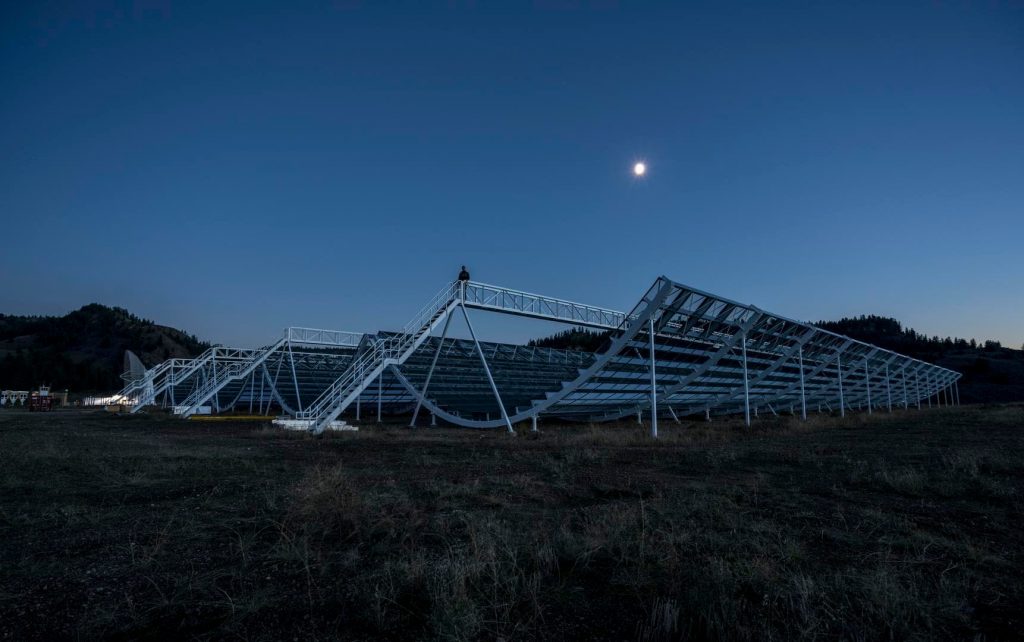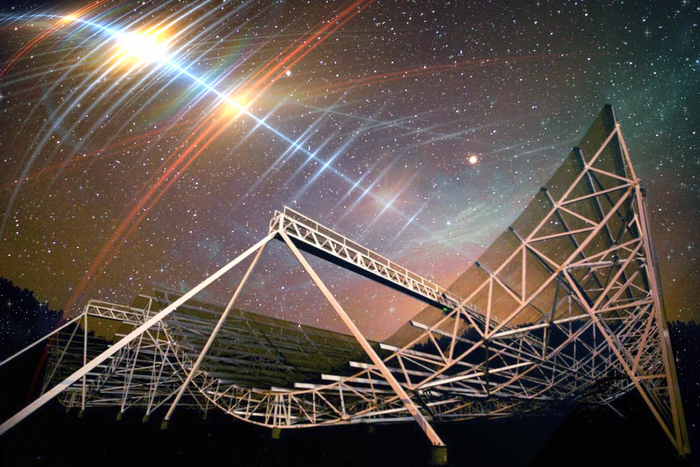- Astronomers discovered a repeating fast radio burst that lasted 1,000 times longer than average bursts.
- Researchers hope by studying the burst they'll be abe to pinpoint its origin.
- Hundreds of fast radio bursts have been detected since the first cosmic flash was discovered in 2007.
Astronomers have discovered a strange and persistent radio signal from a galaxy roughly 1 billion light-years away. Studying these flares could provide clues about their mysterious origins, and give researchers insight into the faraway reaches of the cosmos.
Fast radio bursts are intense, but brief flashes of radio waves that originate millions to billions of light-years away from Earth. The first of these cosmic flashes, known as the "Lorimer burst," was discovered in 2007. Since then, hundreds of fast radio bursts have been detected — but their exact astrophysical origins remain a mystery.
Fast radio bursts typically last milliseconds. But the newly detected signal, named FRB 20191221A, is about three seconds long — about 1,000 times longer than average, according to the new study, which was published in the journal Nature on Wednesday.
On December 21, 2019, astronomers monitoring data from the Canadian Hydrogen Intensity Mapping Experiment (CHIME) detected a signal that caught their attention.
"I inspected the signal by eye and noticed that it was formed by multiple pulses — it looked a bit like an electrocardiogram," Daniele Michilli, a postdoctoral researcher at MIT and study co-author who viewed CHIME's incoming data, told Insider.
Upon further inspection, Michilli and his team found the signal contained a clear periodic pattern, similar to a heartbeat, which repeated every 0.2 seconds. "That surprised us a lot, because there are not many sources in the universe that can produce that kind of signal," Michilli said.
Two examples of predictable and reliable signals exist within our own galaxy, Michilli said, magnetars and radio pulsars. A magnetar is a dense, dying star with an incredibly powerful magnetic field. A pulsar is the spinning leftovers of an exploded star, which emits narrow beams of radio waves, sweeping past Earth like the beacon of a lighthouse. Astronomers use these consistently repeating signals "to study the universe and to probe our theories," Michilli said.
Most fast radio bursts flare just once, Michilli said, but rarely, the signal repeats and is detected reliably. A repeating signal would allow astronomers to point telescopes at that specific patch of sky and study the burst in greater detail, he said, helping narrow down where it's coming from and what might be causing it.

While the new signal appears to be from a single event, with multiple peaks, like a beating heart, Michilli and his team haven't seen the burst itself repeat — yet.
"We hope to keep monitoring it to see additional bursts from the fast radio burst and discover more of these repeating bursts in the future," he said. To that end, CHIME is expanding, via a collaboration with additional telescopes across North America, which will observe the same patch of sky together, in order to triangulate the radio bursts' locations and link them to specific galaxies.
"We want to know exactly where they come from and study their local environment," Michilli said, adding, "And in the future, we hope to look at some of them with this new James Webb Space Telescope, to see exactly what they are and what's around them."
